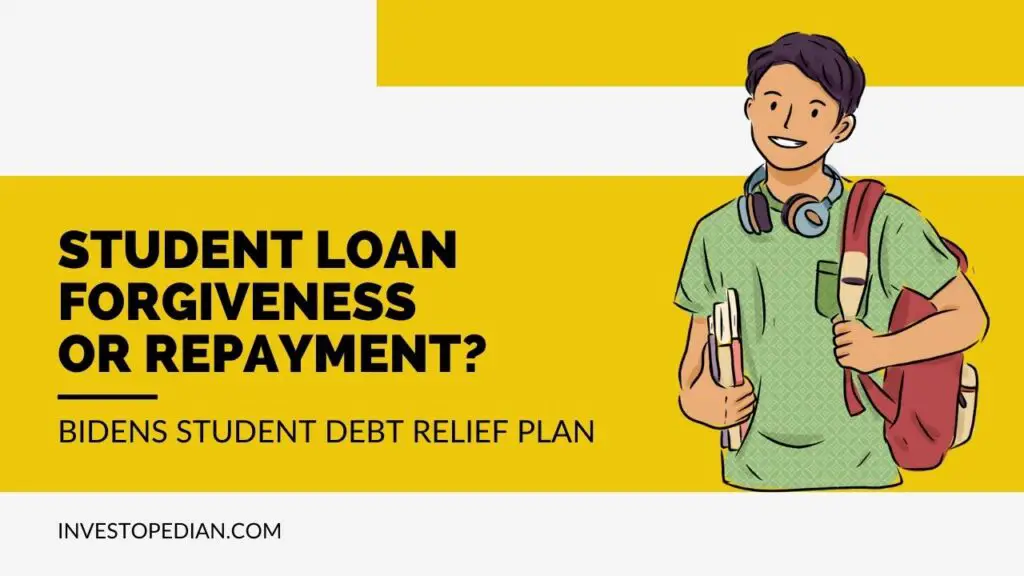The Biden-Harris Administration has introduced a comprehensive Student Debt Relief Plan to aid federal student loan borrowers, especially those from working and middle-class backgrounds, as pandemic-related support phases out. This plan includes loan forgiveness of up to $20,000 and aims to ease the transition to regular loan payments. In this guide, we’ll explain the key components of the plan and how it affects you.

Bidens Student Loan Relief Plan
Part 1: No More Extension
Final Extension of the Student Loan Repayment Pause due to economic challenges posed by the pandemic, the Biden-Harris Administration has extended the student loan repayment pause multiple times. As a result, borrowers with federally held loans have not been required to make any payments since President Biden took office.
Read: Short-Term Investments
Read: Certificate of Deposit
Part 2: Student Debt Relief Plan to Low and Middle-Income Families
Providing Targeted Debt Relief to Low- and Middle-Income Families To facilitate a smooth transition back to loan repayment and assist borrowers at risk of delinquency or default, the U.S. Department of Education will offer debt relief as follows:
- Pell Grant recipients with loans held by the Department of Education may receive up to $20,000 in debt relief.
- Non-Pell Grant recipients could be eligible for up to $10,000 in debt relief.
- Eligibility is based on individual income, with thresholds set at $125,000 for individuals and $250,000 for households.
Furthermore, borrowers employed by nonprofits, the military, or federal, state, Tribal, or local government may qualify for complete student loan forgiveness through the Public Service Loan Forgiveness (PSLF) program. Visit PSLF.gov for details on eligibility and requirements.
Part 3: New Income-Driven Repayment plan
Making the Student Loan System More Manageable The Biden-Harris Administration has proposed a rule to create a new income-driven repayment plan aimed at reducing monthly payments for lower- and middle-income borrowers. This plan includes:
- Ensuring that borrowers pay no more than 5% of their discretionary income monthly on undergraduate loans, down from the previous 10%.
- Expanding the definition of non-discretionary income, protecting borrowers earning less than 225% of the federal poverty level from making monthly payments.
- Forgiving loan balances after 10 years of payments for borrowers with loan balances of $12,000 or less.
- Covering the unpaid monthly interest, preventing loan balances from increasing as long as borrowers make their monthly payments, even if their income is low.
The Biden-Harris Administration is actively working to implement these improvements to the student loan system. Stay updated on progress by visiting this page or signing up for email updates from the U.S. Department of Education.
Beware of Scams
It’s crucial to remain vigilant against potential scams. Be cautious if approached by companies promising loan discharge, forgiveness, cancellation, or debt relief for a fee. Federal student aid assistance does not require payment. Only work with authorized entities like ED and loan servicers, and never disclose personal information or account passwords. Report scam attempts to the Federal Trade Commission at 1-877-382-4357 or online at reportfraud.ftc.gov.
Final Words
The Biden-Harris Administration’s student debt relief plan aims to provide much-needed assistance to federal student loan borrowers. By understanding its components and staying informed, you can navigate the changes effectively and make informed decisions regarding your student loans.